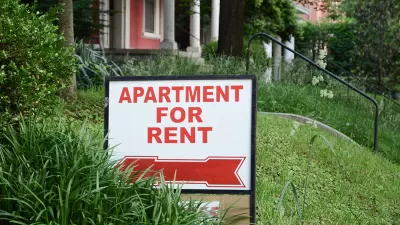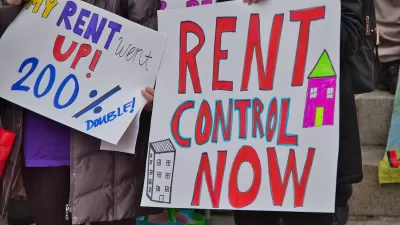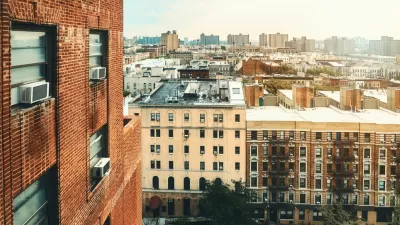Explore the balance between rent control policies and market dynamics, analyzing how different models impact housing affordability and real estate investment.

Rent control policies are regulations designed to cap the amount landlords can charge to rent a property. They aim to keep housing affordable and prevent displacement.
These policies come in various forms, from strict caps on increases to more flexible models balancing tenant protection with market incentives. Understanding the impact of rent control on housing markets is crucial because it affects the availability and quality of rental units and the financial viability for landlords and developers.
Types of rent control models
Different rent control models vary in their approaches and impacts on the housing market. Understanding them helps clarify how they balance tenant protection with market health and why some may be more effective than others in specific contexts.
First-generation rent control
First-generation rent control — often known as “hard” rent control — sets strict limits on rent increases, essentially freezing them at a certain rate regardless of market changes. This model is characterized by rigidity and protects tenants by preventing sudden rent hikes.
While it offers immediate affordability and stability for tenants, it also has significant drawbacks. It can discourage landlords from maintaining or upgrading their properties and reduce the incentive for new housing development. These factors lead to housing shortages and potential black markets for rental units.
Second-generation rent control
Second-generation rent control or “soft” rent control allows moderate rent increases tied to inflation or other economic indicators. It offers a more flexible approach compared to first-generation models.
This system often includes provisions for landlord cost recovery and maintenance incentives, balancing tenant protection with market viability. An interesting aspect is that, apart from rent, the cost of utilities such as water often rises more quickly than inflation, which can complicate calculations for tenants and landlords.
The pros of second-generation rent control include better maintenance of rental properties and continued investment in new housing. However, it may still lead to gradual housing shortages and can be complex to implement and enforce effectively.
Case studies
Examining real-world examples provides valuable insights into the practical effects of rent control policies.
New York City
New York City has a long history of rent control, dating back to the post-World War II era. Today, the city continues implementing a combination of first- and second-generation rent control models, which impact a significant portion of its rental housing market.
These policies provide stability and protection from rapid rent increases for tenants. This was particularly true during the COVID-19 pandemic, which saw massive unemployment, leaving many with limited income to cover rent and other expenses.
San Francisco
San Francisco has a dynamic history with rent control policies, which have evolved over the years to address the city’s housing crisis. These regulations have seen various amendments to balance tenant protections with market realities.
For example, in 2024, the allowed rent increase percentage is set at 1.7 percent, reflecting efforts to keep housing affordable while acknowledging inflation. This cap offers tenants stability and predictability in a high-demand market, reducing the risk of sudden, unaffordable rent hikes.
Innovative approaches to rent control
Cities are exploring innovative approaches to balance affordability with market sustainability. These strategies offer potential solutions that can better meet the needs of tenants and landlords.
Hybrid models
Hybrid rent control models combine elements of strict and flexible policies to create a balanced approach to protecting tenants while encouraging healthy market dynamics. These models often set moderate caps on rent increases linked to inflation and provisions allowing landlords to pass on some maintenance and improvement costs.
This balance helps ensure rental properties are well-maintained and new housing developments remain financially viable. It addresses the needs of tenants seeking stability and landlords requiring fair investment returns.
Subsidies and incentives
Government subsidies support tenants and landlords, particularly in times of economic hardship. Programs like the Emergency Rental Assistance — which provided over $46 billion during the COVID-19 pandemic — have been instrumental in maintaining housing stability for eligible renters.
These subsidies help cover rent and utility costs, alleviating financial stress and preventing evictions. Effective subsidy programs stabilize the housing market by reducing vacancies and maintaining consistent revenue streams for property owners.
Balancing rent control for sustainable housing markets
Balanced rent control policies create sustainable housing markets, protecting tenants while encouraging investment and maintenance. Stakeholders must consider hybrid and innovative approaches to achieve better market dynamics and ensure affordable housing solutions for all.

Alabama: Trump Terminates Settlements for Black Communities Harmed By Raw Sewage
Trump deemed the landmark civil rights agreement “illegal DEI and environmental justice policy.”

Planetizen Federal Action Tracker
A weekly monitor of how Trump’s orders and actions are impacting planners and planning in America.

Why Should We Subsidize Public Transportation?
Many public transit agencies face financial stress due to rising costs, declining fare revenue, and declining subsidies. Transit advocates must provide a strong business case for increasing public transit funding.

‘Clybourne Park’ Sets Stage for Housing Equity Discussions
Clybourne Park, a play exploring race, real estate, and community tensions, can set the stage for discussion on the lasting impacts of housing discrimination, gentrification, and the fight for affordability.

Understanding Road Diets
An explainer from Momentum highlights the advantages of reducing vehicle lanes in favor of more bike, transit, and pedestrian infrastructure.

New California Law Regulates Warehouse Pollution
A new law tightens building and emissions regulations for large distribution warehouses to mitigate air pollution and traffic in surrounding communities.
Urban Design for Planners 1: Software Tools
This six-course series explores essential urban design concepts using open source software and equips planners with the tools they need to participate fully in the urban design process.
Planning for Universal Design
Learn the tools for implementing Universal Design in planning regulations.
Caltrans
Smith Gee Studio
Institute for Housing and Urban Development Studies (IHS)
City of Grandview
Harvard GSD Executive Education
Toledo-Lucas County Plan Commissions
Salt Lake City
NYU Wagner Graduate School of Public Service






























